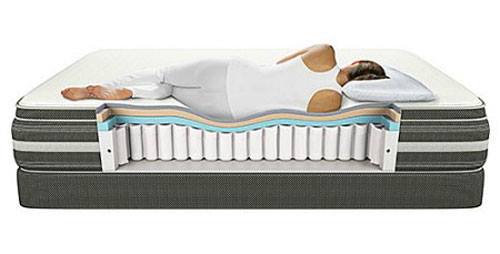Recovering from a back injury – slow and steady
Back injuries are more common than most of us would like to admit. Whether they come from lifting something that we knew from the beginning was too heavy for us, or getting taken out by our massive brother during a friendly game of football in the back yard, every single one of us can relate to having some type of back pain in the past.
Table of Contents
In general there are three types of muscles in our back that we can hurt:
Extensors – as the names says, these muscles help our back extend upward, help us stand up and straighten our back, as well as move our thighs away from our body.
Flexors – these muscles are used to flex our thighs in toward our bodies as well as help to support the spine from the front when we bend over. Another main function of these muscles is also to control the arch of our lower spine.
Obliques or Rotators – probably the most important muscles, these help us rotate our spine and turn our bodies to the direction we want them to go. They also endure that the spine is stable and that it has the proper posture while keeping the correct curvature to ensure a healthy spine.
So what do you need to do if you have hurt your back by doing something you either knew you shouldn’t be doing or by some freak accident? Below are some guidelines to getting back on track:
1. Get to a doctor and understand what happened
Most people when they feel back pain assume that it is a temporary thing from something that they did or the way they sat/slept. This sometimes is the case, but for any pain that lasts longer than 36 hours, it is best to head out for some advice.
As the saying goes – prevention is better than a cure. Head out to your nearest doctor or specialist and find out what is causing the back pain. Make sure you ask all the questions you can think of so that you fully understand the situation so that you can make the necessary changes to accommodate and rectify it.
2. Exercise
If you’ve been to a doctor and there was something that they saw was wrong, chances are that they gave you a list of exercises to do at home or at physiotherapy. Don’t make the mistake of thinking that these won’t help or that they are a waste of time. Sometimes exercises that we think look stupid or don’t make sense to us are the ones that help the most.
Make sure that you do all your exercises as and when you are supposed to. Another thing to keep in mind is that not every back strengthening exercise is good for every type of back injury. As far as you can, stay away from exercises you find online and stick to the ones that your doctor has recommended.
3. Rest
One of the most important things you can do for your body is rest it when it needs it. Rest helps your body take stock of itself and start mending things that it finds wrong. Now this doesn’t mean that you should skimp out on Physiotherapy exercises or that you need to evolve into a couch potato. Just make sure that you allow your body some down time to rest in between your strengthening exercises.
4. Re-think your sleep choices
A world-renowned sleep coach who worked with some of the sport’s greatest names, Nick Littlehales shares in his book, “Sleep” that rest and sleep is the no.1 overlooked aspect of healing after a sports injury.
He stresses the case of Gary Pallister, who was dealing with a lower back injury at the time Nick joined Manchester United FC as a sleep coach. As you can imagine, the injured athlete had the access world’s top physicians and facilities, but nobody ever bothered to look at his mattress and whether it’s good for his body type and posture.
Simply getting an expensive mattress is not the solution – even the best mattresses do not guarantee, by any stretch of imagination, that your sleeping position is optimal to minimize pressure points, align your spine and allows it to heal.
5. The counterintuitive solution – an air mattress
Let us first say that an air mattress is not the answer for every back-pain issue, but it’s definitely worth looking into. It might be counterintuitive that a cheap airbed (even the best air mattresses cost just a fraction of regular beds) that people usually use for camping or welcoming guests might help where your beloved expensive mattress can’t.
Here’s what different about air mattresses
Firmness of an air mattress is adjustable, that’s the main reason why it might help. If you are having good and bad days when recovering from a back injury, it’s likely that the difference between the two is the quality of sleep you got the night before.
It’s not about getting the 7 or 8 hours, it’s about whether you back muscles were “forced” to work through the night because your bed is too firm or too soft. The best of air mattresses eliminate that issue by allowing you to choose the level of firmness and experiment until you fin done that’s just right for you.
If you do try an airbed, choose one with a smart NeverFlat Pump
While they might help, a poorly chosen air mattress can aggravate you condition if it’s loosing air and curve your spine. The best airbeds come solve that problem by adding what the industry calls a “NeverFlat” or a “Smart” pump. These blow-up beds are superior because they feature a secondary pump equipped with sensors that add air and maintain your desired firmness through the night.
So, as we said, it might counterintuitive, but having in mind the low-cost of an inflatable mattress, they are worth trying out – you only have to be patient when choosing, read reviews of the air mattresses and find one that’s best for your situation. You can see a whole range of top-rated air mattress in this airbed guide on TheSleepStudies.com.
6. Change your diet – yes, even if you’re already eating healthy
Change your diet to foods that fall into the category of ‘anti-inflammatory’ foods. This means cutting out grains and eating more of things like fish. Fish oil has anti-inflammatory properties that helps your body combat the inflammation in your back and helps speed up the healing process.
7. Keep it up
Back injuries have a habit of coming back long after we thought we had healed them. Sometimes it just takes one wrong move to spark and old injury back to life and usually the pain is double what it was the first time.
So, even after your back is healed and you feel like you are back to normal, keep up the exercises that your doctor gave you and keep doing the strengthening techniques you were doing to sort out the injury in the first place. While you don’t need to maintain the same frequency of these exercises, it is always a good idea to keep them up as often as you can.
8. Take it slow and watch yourself
Once we are healed from an injury we often jump straight back into things and pretend like nothing has happened. Now this does not mean that you need to let a healed injury prevent you from living your life and define you as someone who is ‘injured’.
It does mean however that you now have a responsibility to yourself to look after yourself. Take it slow in doing things like heavy lifting and roughing it with your friends. You don’t want to go through the whole process of healing for a second time.


